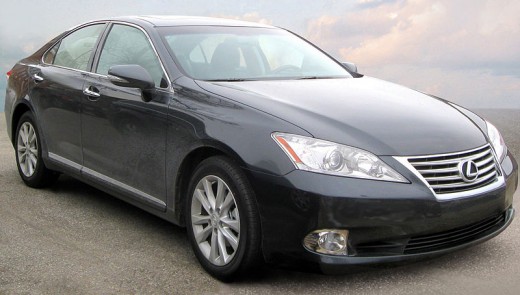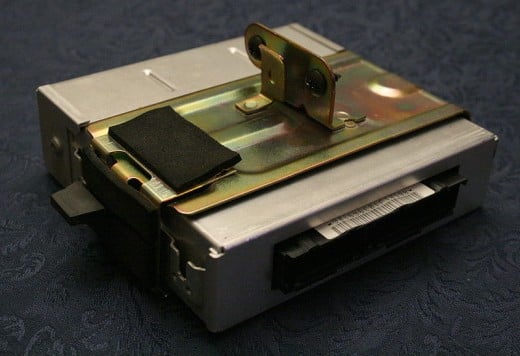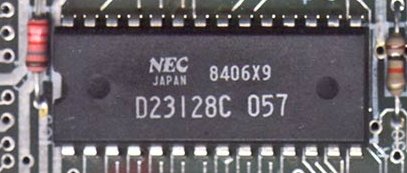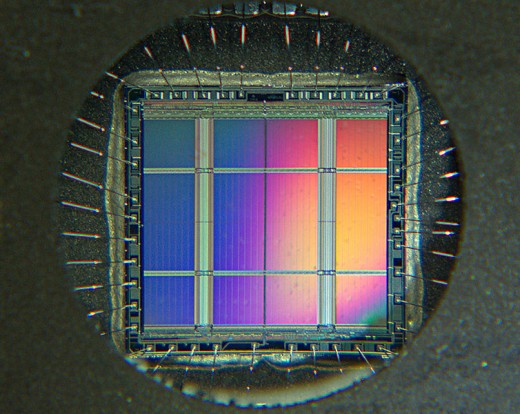Toyota Bitten by Buggy Software?
Accelerator Problems
We've all heard the story of the California Highway Patrol officer who died with his family in a Lexus when it rear-ended an SUV.
The details are that CHP Officer Mark Saylor, 45; his wife, his daughter,
and his brother-in-law, were all
killed in the Aug. 28 crash in Santee, California. Police stated that someone called 911 from a 2009 Lexus ES 350 6:30 p.m. local time. The caller reported that the car's accelerator was stuck. The Lexus was a loaner because Saylor
had dropped off his regular vehicle for service. Witnesses to the accident said that the Lexus was going about 100 mph on northbound state Route 125 when it
collided with a Ford Explorer. The car then launched over a curb, went
through a fence and hit an embankment after going airborne. The Lexus reportedly rolled several times before bursting into flames in the San Diego River Basin.
Toyota,
which makes Lexus cars, recalled the "all-weather" floor mats in its
2008 version of that model because of complaints about them sliding
forward and jamming the accelerator.
Note too that this particular model of Lexus does not use a key to start or shut off the vehicle. A button on the dash provides this function instead. In the Lexus models in particular the start button must be held down for three seconds to shut off the engine.
I Have my Doubts
If this the problem why, after almost ten years of Lexus and Toyota models having this same general floormat design are drivers suddenly having problems?
And I have to say, having read any number of blogs, when a contributor states that a car he was allowing to warm up suddenly throttled up to maximum engine speed, and he wasn't even in the car, I'd have to say it's not the floormats...or even the gas pedal.

Prius Brake Problems
Now there are reports that another flagship Toyota vehicle may have brake problems. You step on the brake and nothing happens.
According to Toyota the problem is known and the brake interruption is very brief; under one second.
Toyota's contention that:
"the Prius problems is that there's a time lag when the Prius switches between its gas engine and the electric motor. The car would then be delayed in switching between the traditional hydraulic brakes and the electronic braking system."
In other statements Toyota implicated the anti-lock braking systems stating that some minor changes were made to those systems to give drivers a more consistent brake feel.
Both these explanations sound plausible, but again I have my doubts.



The Electronic Car
A number of formerly purely mechanical systems in cars have given way to electronic equivalents. There's a very good reason for this. In fact there are many good reasons for this. I'll list them below.
Emissions, Gas Mileage and Performance
Modern engines require very tight microsecond to microsecond control in order to reign in emissions, provide better gas mileage, and still give the driver an exhilarating ride. This control can only be accomplished with sensors and a computer to monitor those sensors, adjust spark advance and air/fuel mixtures. These computers must monitor the performance of the engine in tiny time-slices and do it continuously. The computer systems no only adjust timing, they provide more spark to the spark-plugs as they wear out, and even monitor and control the throttle position.
Braking Safety
Anti-lock braking systems provide shorter and more certain stopping distances because they cause the brakes to pulse when too much wheel rotation is detected. This pulsing prevents the brakes from locking the wheels and causing a skid.
Energy Recovery
One of the ways hybrid and electric cars recover and reuse energy is by taking the energy that would ordinarily be wasted by braking and routing that energy back into a generator which in turn charges the battery. By using the car's momentum to turn a generator, the generator itself is tasked with slowing the car while the energy it produced is stored. This means that the tradition braking system is not used during these recharging cycles. That or the traditional braking system is only partially used.
Drive by Wire
Other developments that are certain to appear in cars in the very near future is "electronic" steering. A motor and position control is much lighter than the shaft that connects the steering wheel to the steering system. It's also safer for the driver in that there's no blunt object pointing directly into the driver's face; a potential spear in front end collision.
Software Control
Both the accelerators and brake systems in the Toyotas are under some form of software control.
In the case of the accelerator, the control is required to get the best performance, gas mileage, and emissions from the vehicle.
In the case of braking the systems anti-lock brake systems must monitor wheel rotation compared to brake pedal pressure. If wheels stop rotating even if the car is still moving forward braking must be stopped for a moment so the tire can regain traction on the road. Again this type of control is ultimately monitored and regulated by computers.
All computers must have programs that run within them. In the case of the ABS example such a program might look something like this:
- Brake applied?
- Go to step 4.
- Release and reapply brake.
- Auto speed slowing? Go to step 1.
- Auto speed not reduced? Go to step 3.
In this example the pulsing only takes place if Step 5 indicates a fault. But this example is a very simple one and likely the actual program controlling the brakes is much more complicated. For instance this example does not account for the wheels leaving the ground due to pot-holes or bumps. The example above also does not monitor the accelerator at all.
What if the programmer forgot to account for a rare, but real occurrence during braking? It is not beyond the realm of possibility. What if the program did not give a particular condition a higher priority than others during certain conditions? This is also a possibility.
Bugs and Gremlins
In short the reasons I think the ultimate problems will be found to be software or programming are as follows:
I've been creating and writing programs for thirty plus years. I know full well what it's like when I forgot to account for something or didn't know that I needed to. A program will work perfectly 99.9% of the time and fail spectacularly for "no apparent reason."
Of course there's always a reason, I just may not have known that reason could exist. That or I failed to account for that reason even after I knew about it thinking "this isn't likely to happen."
Fortunately, all of my programming has been business related not automotive.
Rapid Response "Excuses"
Toyota has very quickly "identified" the problems, announced the solutions and pledged to take care of them. I'm very suspicious because I know that a software problem can stay hidden for months. I'm also concerned because no one seems to be looking at the possibility that it's software.
Also, either Toyota knew about the problems before they became fatal and did nothing or has seized on the floor-mat / ABS change in hopes of avoiding recalling every vehicle they make. Either way they seem to have come up with the issues and fixes quickly; very quickly indeed. In fact I'm not the least bit comfortable with how quickly the problems were zeroed in on.
Engineering errors typically take much longer to pinpoint and solutions to those problems even longer to implement.
Why I Think it's Software
The following are the reasons I believe this is a software problem not a mechanical problem.
- Floor mats don't make sense; they've been used in cars for decades with only minor problems reported
- Accelerator pedals don't make sense; even Toyota cited their supplier for high quality and on-time delivery
- Toyota's accelerator linkage is not mechanical; it is under software control with feedback to a computer system
- A jammed floormat or sticky pedal will not cause a car to throttle up when no one is or was sitting in the car when it was started
- No one seems to be looking into a possible software connection stating instead that "it can't be the software"
If I'm right, and I sincerely hope I'm not, these problems will be very expensive to fix. Expensive enough to bankrupt Toyota and put it out of business. The reasons are many.
For one if they are indeed software problems then extensive testing will have to be conducted under every imaginable condition to determine where the programming breaks down. Next, a team of programmers will then have to be put to work correcting the problems while simultaneously retesting the software under every imaginable condition.The fixes will have to work with the current computer systems and fit on the memory devices designed for these vehicles. If they can't then the expenses will sky-rocket.
After the company has reached a certain level of confidence in the solution the programming will then have to be burned onto memory chips and those chips, every last one of them, will have to be replaced in the most massive recall this (or any country) has ever witnessed for a line of automobiles.
Acceleration Problems not Limited to Toyota
To date every major manufacturer in the last ten years has had sudden acceleration problems reported in their vehicles. None of these problems were reported before the advent of computer controlled ignition timing and acceleration.
The major manufacturers faced with recall for sudden unintended acceleration are:
- General Motors
- Toyota
- Ford
- Honda
- Chrysler
Other, smaller manufacturers who have had to issue National Highway & Traffic Safety Administration (NHTSA) recalls for sudden unintended acceleration are:
- Nissan
- BMW
- Volkswagen
- Mitsubishi
- Subaru
- Mercedes-Benz
- Kia
- Mazda
- Land Rover
- Suzuki
- Volvo
Of the vast majority of recalls due to sudden unintended acceleration in 2008 were limited to two companies. Toyota and it's luxury brand Lexus and Ford.
The Woz
Steve Wozniak, the creator of the Apple II computer, stated during The Discovery Forum 2010.
"Toyota has this accelerator problem we've all heard about, Well, I have many models of Prius that got recalled, but I have a new model that didn't get recalled. This new model has an accelerator that goes wild, but only under certain conditions of cruise control. And I can repeat it over and over and over again--safely."
"This is software. It's not a bad accelerator pedal. It's very scary, but luckily for me, I can hit the brakes."
Disclaimer
The author owns no stock in any of the companies mentioned nor been compensated monetarily, via discounts or freebies for the contents of this article.











